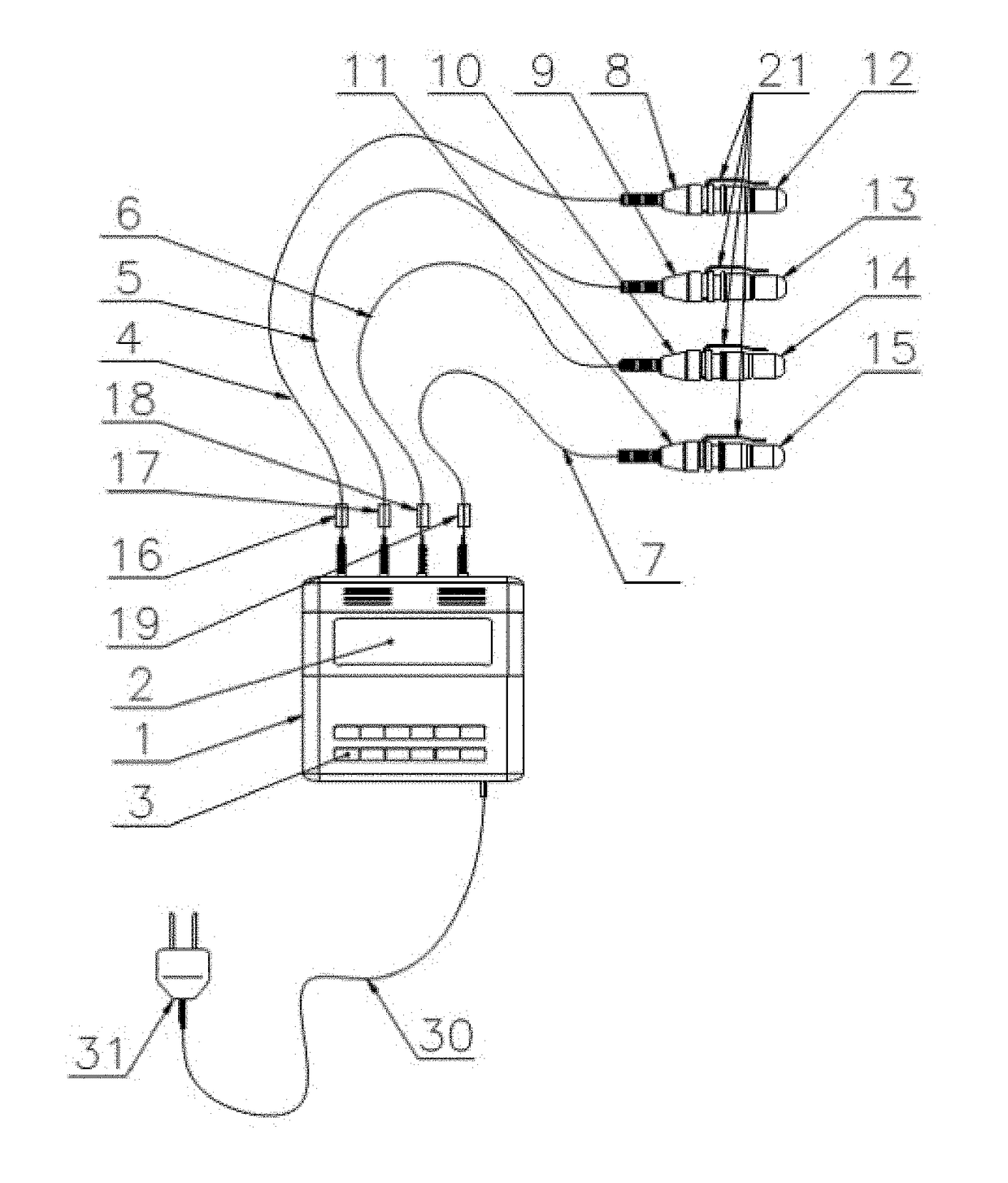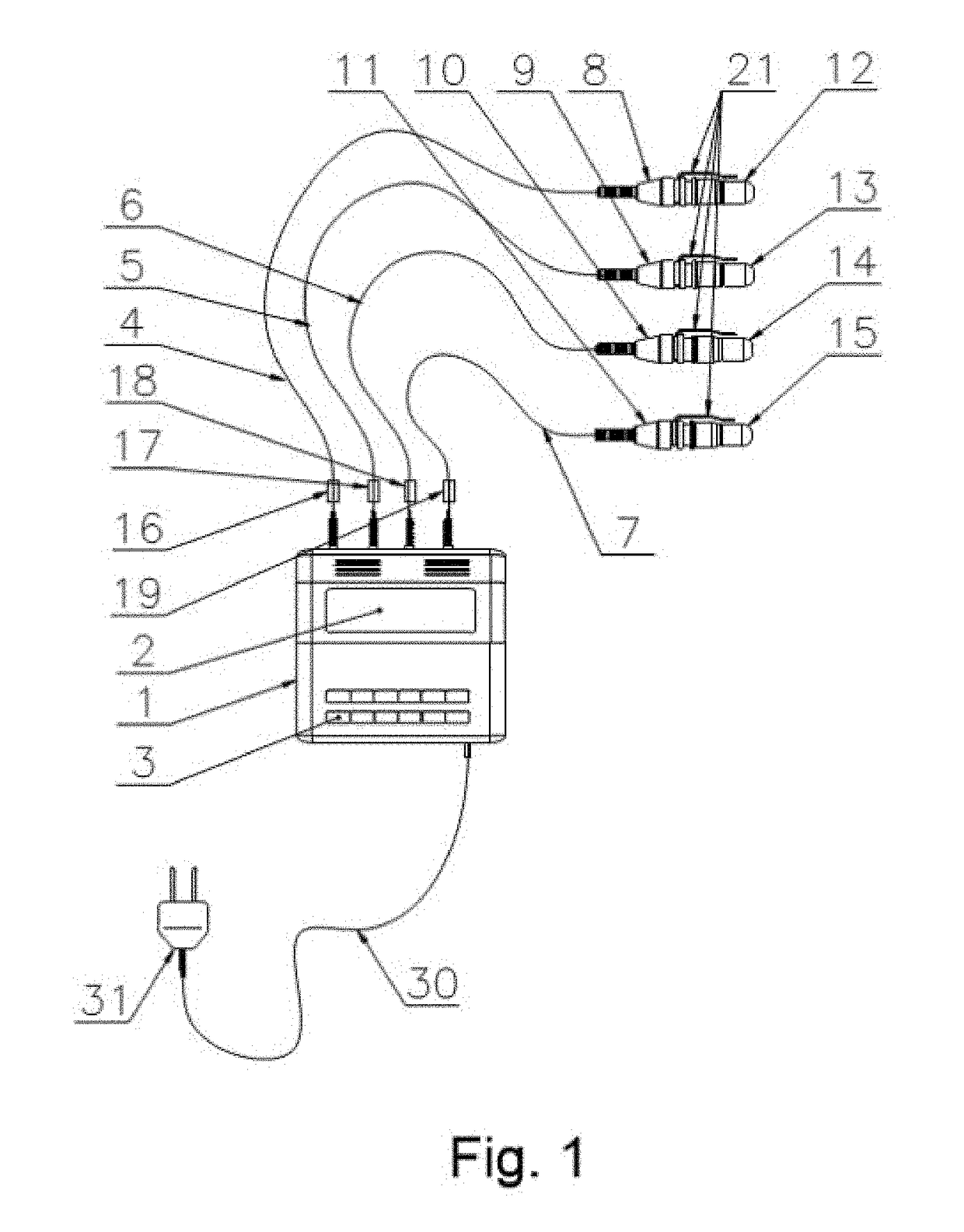Device for stimulation of the brain by laser circularly or elliptically polarized light
a technology of elliptical polarized light and laser, which is applied in the field of brain stimulation devices, can solve the problems of limited use of led diodes, laser diodes, and devices for irradiation of nasal cavities based on led diodes, and achieve the effects of improving patient condition, reducing radiation intensity, and reducing radiation intensity
- Summary
- Abstract
- Description
- Claims
- Application Information
AI Technical Summary
Benefits of technology
Problems solved by technology
Method used
Image
Examples
Embodiment Construction
[0041]Referring to FIGS. 1 to 10, the device consists of the main unit 1 equipped with control buttons 3 and display 2 in the front part, from which at least one of laser diodes 16, 17, 18, 19 is supplied with electric energy, and to which at least one of nasal applicators 8, 9, 10, 11 or nasal applicators 38, 39 suitably equipped with laser diodes 40, 41 in the rear part are connected in the upper part by electric power cables 36, 37 or by at least one of optic fibers 4, 5, 6, 7. All nasal applicators 8, 9, 10, 11 include an intermediate piece 110 in the central part. They are suitably equipped with at least one of replaceable nasal adapters 12, 13, 14, 15, 42, 43 in the end part at exit, and with nasal clips 21 in the peripheral part. At least one of nasal adapters 12, 13, 14, 15, 42, 43 includes polarizer 47, quarter wave plate 48, circular polarization foil 99, adhesive layer 98, and / or one of the pieces of glass 46, 49 in the end part at the exit. The main unit 1 is supplied or...
PUM
 Login to View More
Login to View More Abstract
Description
Claims
Application Information
 Login to View More
Login to View More - R&D
- Intellectual Property
- Life Sciences
- Materials
- Tech Scout
- Unparalleled Data Quality
- Higher Quality Content
- 60% Fewer Hallucinations
Browse by: Latest US Patents, China's latest patents, Technical Efficacy Thesaurus, Application Domain, Technology Topic, Popular Technical Reports.
© 2025 PatSnap. All rights reserved.Legal|Privacy policy|Modern Slavery Act Transparency Statement|Sitemap|About US| Contact US: help@patsnap.com



